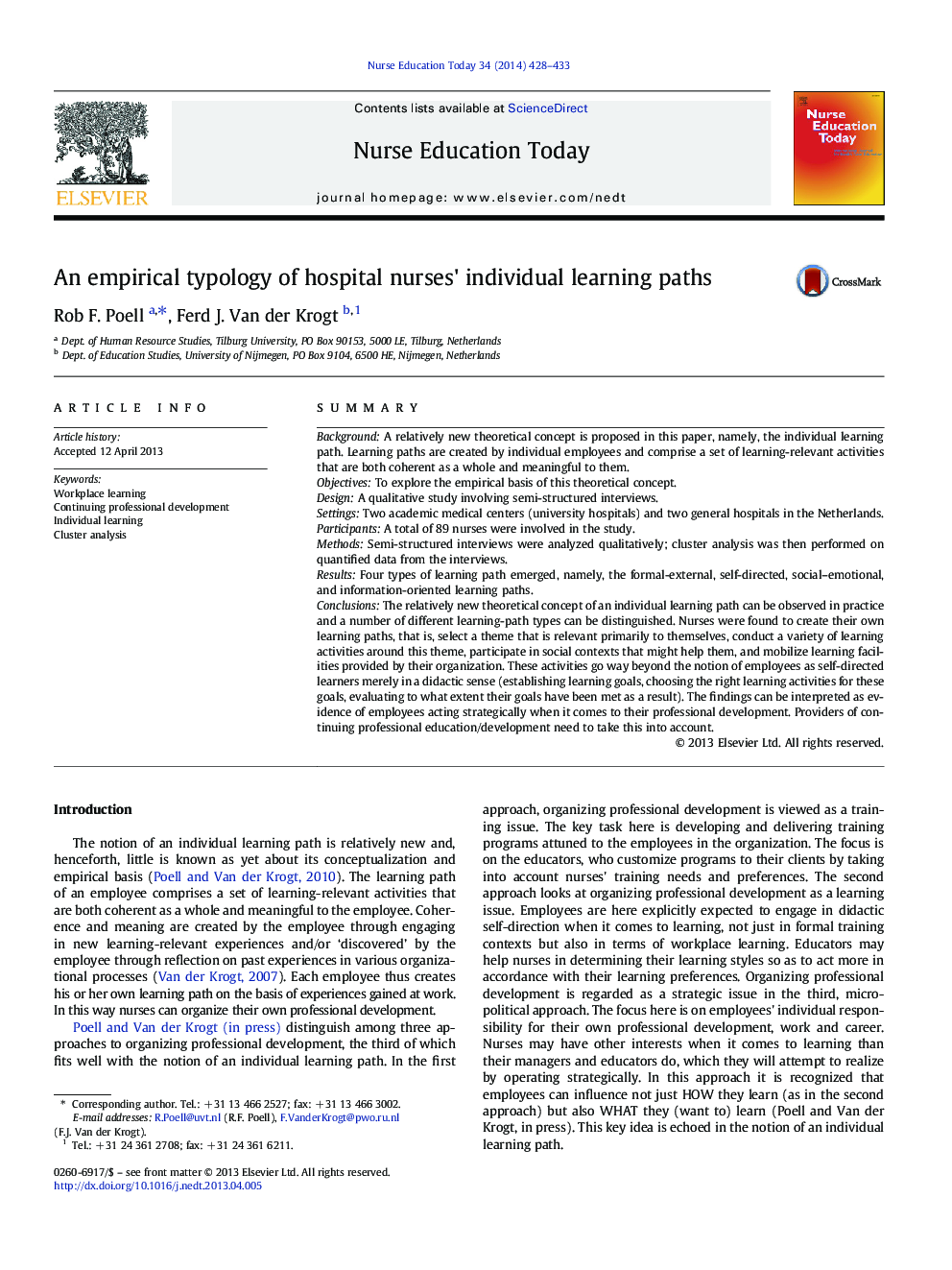| Article ID | Journal | Published Year | Pages | File Type |
|---|---|---|---|---|
| 368134 | Nurse Education Today | 2014 | 6 Pages |
SummaryBackgroundA relatively new theoretical concept is proposed in this paper, namely, the individual learning path. Learning paths are created by individual employees and comprise a set of learning-relevant activities that are both coherent as a whole and meaningful to them.ObjectivesTo explore the empirical basis of this theoretical concept.DesignA qualitative study involving semi-structured interviews.SettingsTwo academic medical centers (university hospitals) and two general hospitals in the Netherlands.ParticipantsA total of 89 nurses were involved in the study.MethodsSemi-structured interviews were analyzed qualitatively; cluster analysis was then performed on quantified data from the interviews.ResultsFour types of learning path emerged, namely, the formal-external, self-directed, social–emotional, and information-oriented learning paths.ConclusionsThe relatively new theoretical concept of an individual learning path can be observed in practice and a number of different learning-path types can be distinguished. Nurses were found to create their own learning paths, that is, select a theme that is relevant primarily to themselves, conduct a variety of learning activities around this theme, participate in social contexts that might help them, and mobilize learning facilities provided by their organization. These activities go way beyond the notion of employees as self-directed learners merely in a didactic sense (establishing learning goals, choosing the right learning activities for these goals, evaluating to what extent their goals have been met as a result). The findings can be interpreted as evidence of employees acting strategically when it comes to their professional development. Providers of continuing professional education/development need to take this into account.
